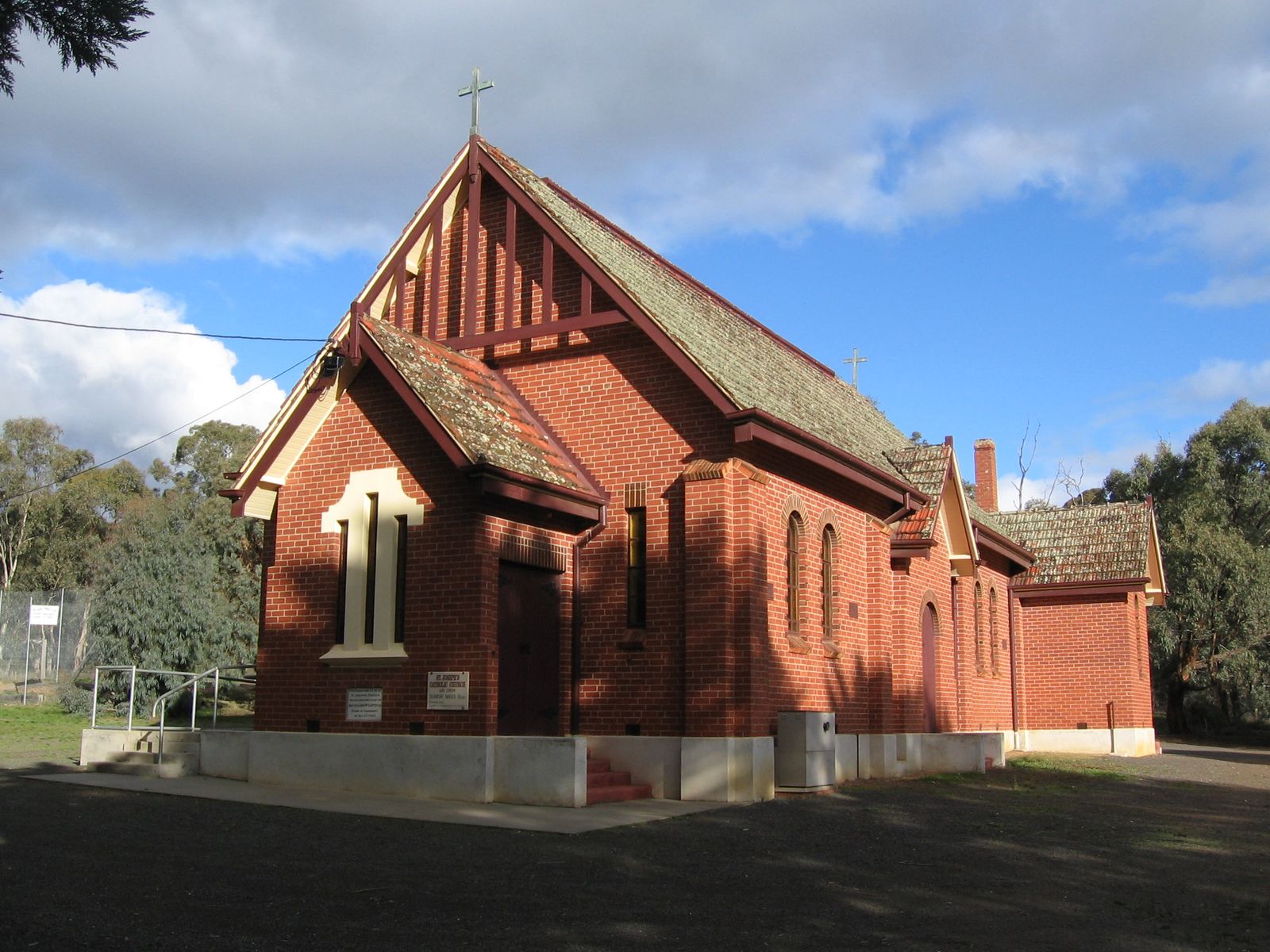
With rolling green hills, granite outcrops, beautiful vistas and easy access to both Bendigo and Melbourne, the localities of Mandurang, Sedgwick, Axe Creek and Emu Creek have long been popular with residents seeking the idyllic regional lifestyle.
VIEW HOUSES FOR SALE IN OUTER SOUTH EAST BENDIGO
VIEW HOUSES TO RENT IN OUTER SOUTH EAST BENDIGO
Emu Creek, a stream approximately 12km south-east of central Bendigo was settled by farmers in the 1850s. Among them were several German vignerons and by all reports these winemakers quickly established good businesses. Cal Heine and William Griffenhagen had an estate with a permanent staff of 30 and up to 70 seasonal pickers. However, by the early 1900s it was noted in The Australian Handbook 1903 that “all the vines in the district have been grubbed out on account of Phylloxera and vignerons have to take to bad agricultural land.” The handbook also referenced the fact that “a little gold is found”, however this part of the city certainly didn’t experience the rush of the rest of the region.
Axe Creek, on the Bendigo-Redesdale Road converges with Emu Creek and later joins the Campaspe River. Axe Creek had both Anglican and Catholic primary schools in the 1860s and Upper Axe Creek North Primary School was renamed Eppalock Primary School in 1920 – a lovely school that enjoys an excellent community today. On Axe Creek Road is St Joseph’s Catholic Church (the brick build replaced weatherboard in 1937) and many of the Axe Creek and Emu Creek residents enjoy a simple country life, with a few traditional farmers in between.
The district of Sedgwick, south-west of Emu Creek and adjoining Axe Creek, was named Upper Emu Creek until 1901. Freehold land was granted here in 1854 and in 1865 an acre of land and 60 pounds was set aside to build a common school. There was only one mine in the district – the Great Eastern, now closed along with its namesake, the once successful local pub – and irrigation water from the channel supplied many farms for fruit and tomato growing. The earliest industry in the area was bark stripping although at one time, Sedgwick produced thousands of cases of apples and pears for export. The Springs, where the channel water runs over rocks, was once a favourite picnic area and day out for Bendigo locals. An active fire brigade, tennis club, landcare group and hall all provide a sense of community in the area.
As you head back towards Bendigo, the narrow valley of Mandurang sits alongside Sheepwash Creek to the north, and to the east through pretty Tannery Lane. The tannery the road is named after closed in 1904 but once employed over 30. The name Mandurang is thought to be derived from the Aboriginal word meaning black cicada and the area was settled in the 1860s for gold and also for timber cutters who harvested trees from what is now the State Forest. Jean De Ravin, a vintner who opened cellars in 1866, lived on what is one of four wineries in the immediate area – the pretty Chateau Dore.
Today, this picturesque part of the city is enjoyed by hobby farmers, horse enthusiasts and residents who like having the city at their fingertips whilst still enjoying the beauty, space and freedom of rural living. The proximity to Bendigo has always been a solid drawcard to the area, and a short drive via Harcourt brings you to the Calder Freeway and on to Melbourne with minimal effort, ensuring this is a stunning piece of Bendigo that offers the best of both worlds.
Outer South East Bendigo At A Glance
Information based on 2016 Census Results and covering Emu Creek, Axe Creek, Sedgwick)
Population: 1,599
Male: 50.5%
Female: 49.5%
Median age: 44
Families: 456
Private dwellings: 610
Average people per household: 2.6
Median monthly mortgage repayments: $1,712
Median weekly rent: $260

